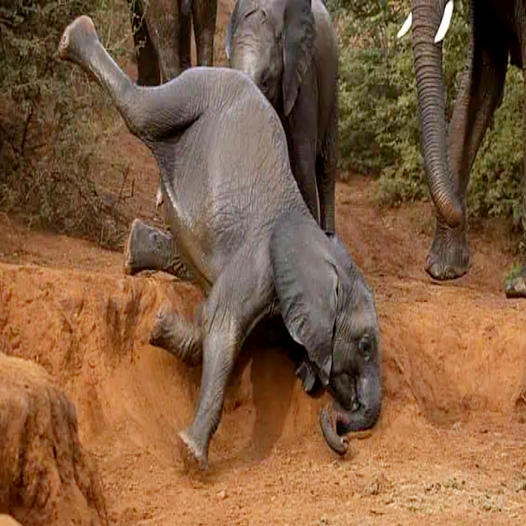A group of elephants moves steadily across northern Botswana’s dusty plains, their ears flapping and trunks occasionally skimming the ground.
As they pass a hidden motion-activated camera, it captures images of each elephant in the group—interestingly, all males.

While female elephants are well-known for forming close-knit herds led by seasoned matriarchs, male elephants have long been considered solitary creatures.
Males typically leave their mother’s herd between the ages of 10 and 20, leading to the assumption that they live as loners.

However, new research shows that younger males often follow older males, suggesting that males also benefit from social bonds.
A recent study published in Scientific Reports analyzed 1,264 sightings of male African savannah elephants traveling toward the Boteti River in 2017 and 2018.
The data reveals that younger males rarely travel alone, and older males often lead mixed-age groups.

This suggests that older male elephants, like female matriarchs, play a significant role in guiding the younger members of their species.
“Mature males frequently position themselves at the front of the group when leading them to water or grazing areas,” explains Diana Reiss, director of the Animal Behavior and Conservation Program at Hunter College.
Though not involved in the study, Reiss highlights the parallels with human societies where elders pass down important knowledge, noting similar patterns in other long-lived mammals such as dolphins and whales.
While previous research focused on female elephants and their breeding herds, this study sheds light on male social dynamics.
“Males have complex social lives, and family connections don’t solely define their groups,” says Connie Allen, a biologist at the University of Exeter and co-author of the study.
The findings add to a growing body of evidence that male elephants’ social structure is more intricate than previously thought.
The study of African savannah elephants follows similar observations made in 2019 of male Asian elephants using motion-activated cameras.
One key example of male bonding is a mid-1990s event in Pilanesberg, South Africa. Introduced to a park, young orphaned male elephants exhibited aggressive behavior and killed 40 white rhinoceroses.
However, their aggression diminished after introducing six older male elephants, who brought stability and order.
“The older males calmed the chaos,” says Carl Safina, an ecologist at Stony Brook University, emphasizing how male elephants learn cultural norms, such as how to behave and locate resources like food and water.
The study’s co-author, Connie Allen, points out the growing concern for older male elephants, frequently targeted by poachers and trophy hunters due to their size and long tusks.
She emphasizes the need to recognize their mentorship role in conservation strategies. “Males are often more elusive,” says Allen, “but they’re far from being loners.”
This new understanding of male elephants could reshape how they are viewed, highlighting the importance of preserving their social structures for future generations.




